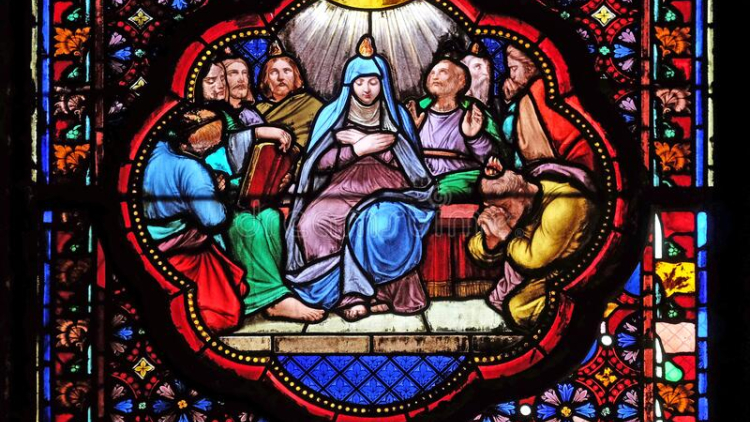Pentecost: between the Torah and the Koran
Easter commemorates the death and resurrection of Christ. It takes place during the Jewish Passover (Pesach), which in turn commemorates the liberation and exodus of the Jewish people from slavery in Egypt. The parallels don't end there: Christians celebrate Pentecost fifty days after the date of Christ's resurrection, while Jews celebrate the festival of Shavuot fifty days after Pesach.
The Greek word pentekoste refers to the ‘fiftieth’ day and the Hebrew word shavuot to seven ‘weeks’ i.e. forty-nine days. The two festivals occur in the spring; which is why Christians in Spain also speak of the Pascua florida [“flowery Easter”] and Jews of the harvest festival (Chag Ha-Katsir) or first-fruits offerings (bikkurim) in the Temple. However, the primary reason for the celebrating the festival of Shavuot is the revelation of the Law (Torah) made to Moses on the mountain of Sinai: “And the angel of the Lord appeared unto him in a flame of fire out of the midst of a bush... [that] was not consumed ”.
During Pentecost, Christians commemorate the comforting visit (parakletos) of the Holy Spirit to the Apostles, which fulfilled the predictions made by Jesus. The entire congregation (ekklesia) was praying, with the Virgin Mary at the centre, when a series of miracles occurred; these included the charisma of the gift of tongues or fiery tongues, expressing the ecumenical nature of the event. Gregory of Nyssa ( 4th century AD) is the author of one of the earliest existing written accounts to compare the mystery of Mary's virginity to the “burning bush”.
The Holy Spirit's descent confirms the symbol of the Apostles and thereby announces their evangelical mission. The world symbol comes from the Greek symbolon. It originally meant a pact or an alliance formalised with a contract or seal, This was then broken, with each of the contractual parties keeping a part of it as a guarantee. By analogy, the symbol expresses the relationship between the sign and its meaning: the letter and the spirit. In a Christian context, it is used as a synonym for the distinctive belief and faith of the Apostles, as expressed in the famous formula of the Apostles’ Creed.
The first Christians were well aware of the parallelisms between Shavuot and Pentecost: the exodus of the Jewish people culminates with the revelation of the Torah, just as Jesus’ message of redemption culminates with the new Law of the Holy Spirit.
Islam, however, offers a different interpretation of these facts. According to Muslims, the Holy Spirit is identified with the Angel Gabriel—the Angel of the Annunciation and Revelation— and Jesus’ references to the Gospel (Injîl) are understood as the prophecy of the coming of the Prophet with the final and true law: the Koran. According to Islam, none of the Gospels that have come down to us has the value of a religious law, nor do the languages in which they are written have the value of a revealed language. Neither is it understood how the Holy Spirit, a messenger and mediator by nature, can be regarded as a new law.
God sent the Angel Gabriel to give the first revelation of the Koran to Muhammad in one of his retreats on Mount Hirâ, during a night (laylat al-qadr) in the month of Ramadan. Muhammad, a poor, illiterate (ummi) Arab shepherd, was frightened and asked his wife Khadîja for advice. She had him visit Waraqa b. Nawfal, a Christian sage from Mecca, who finally confirmed to him: “You have received a visit from the very Spirit of the Revelation (Nâmûs) whom God sent down to Moses”.

